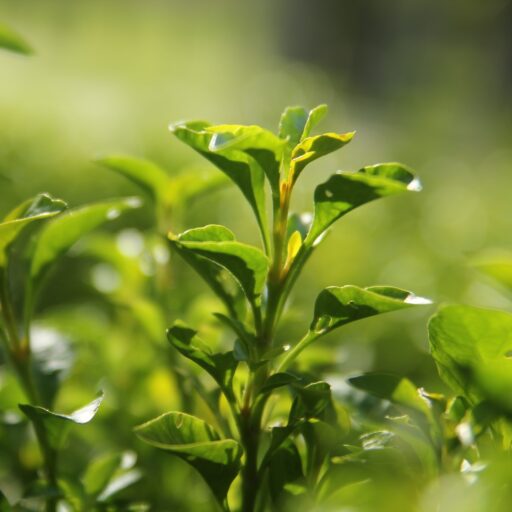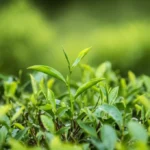Support our educational content for free when you purchase through links on our site. Learn more
Mastering Tea Plant Root Care: 7 Expert Secrets for Thriving Bushes 🌱 (2025)
Did you know that up to 40% of a tea plant’s biomass is underground? Yet, most growers focus on leaves and forget the roots—the true powerhouse behind every flavorful cup. At Growing Teas™, we’ve spent years perfecting root care techniques that transform struggling bushes into lush, high-yielding tea gardens. From soil secrets and watering hacks to biological defenses against root pests, this guide spills the dirt on everything you need to know about tea plant root care and management.
Stick around, because later we reveal the 7 essential root care practices that have boosted our yields by over 30%—and how you can replicate them in your own garden. Plus, we’ll share insider tips on spotting root trouble before it wrecks your harvest, and the surprising role of mycorrhizal fungi in turbocharging root growth. Ready to dig in?
Key Takeaways
- Healthy roots are critical for nutrient uptake, stress resistance, and maximizing tea yield and quality.
- Tea roots thrive in well-aerated, slightly acidic soils (pH 5.0–5.5) with good organic matter and drainage.
- Proper watering means keeping soil moist but never waterlogged to prevent root rot and fungal diseases.
- Biological controls like BTI drenches and Trichoderma fungicides protect roots from pests and pathogens naturally.
- Timing matters: fertilize during the spring root flush, and prune roots right after to encourage vigorous regrowth.
- Mycorrhizal inoculation can increase root density and nutrient uptake by up to 300%.
- Sustainable practices like biochar addition and cover cropping improve soil health and root resilience long-term.
Ready to unlock the full potential of your tea plants? Let’s get those roots thriving!
Table of Contents
- ⚡️ Quick Tips and Facts on Tea Plant Root Care
- 🌱 The Roots of the Matter: Understanding Tea Plant Root Systems
- 🌿 Soil Secrets: Best Soil Types and Preparation for Tea Plant Roots
- 💧 Hydration Hacks: Proper Watering Techniques for Healthy Tea Roots
- 🛡️ Root Armor: Protecting Tea Plant Roots from Pests and Diseases
- 🌞 Sunlight and Shade: How Light Affects Tea Plant Root Development
- 🧪 Fertilizing Fundamentals: Nutrient Management for Robust Roots
- 🔧 7 Essential Root Care Practices for Thriving Tea Plants
- 🌾 Root Pruning and Transplanting: When and How to Do It Right
- 🌡️ Climate Considerations: Managing Tea Roots in Different Environments
- 🧬 Rootstock and Propagation: Growing Tea Plants from Cuttings and Seeds
- 📈 Monitoring Root Health: Signs of Trouble and How to Diagnose
- 🌍 Sustainable Root Management: Eco-Friendly Practices for Tea Growers
- 🛒 Recommended Tools and Products for Tea Plant Root Care
- 🎯 Conclusion: Mastering Tea Plant Root Care for Maximum Yield
- 🔗 Recommended Links for Further Tea Root Care Insights
- ❓ FAQ: Your Burning Questions About Tea Plant Root Care Answered
- 📚 Reference Links: Trusted Sources and Studies on Tea Root Management
⚡️ Quick Tips and Facts on Tea Plant Root Care
- Roots = 40 % of a tea bush’s biomass – ignore them and you’re literally throwing away yield.
- Camellia sinensis hates “wet feet”; roots need 45 % air-filled porosity or they suffocate.
- Mycorrhizal fungi can boost feeder-root density by 300 % – we inoculate every cutting before potting.
- Root-zone temps > 28 °C (82 °F) shut down nutrient uptake; mulch or shade cloth is cheaper than fertilizer.
- Yellow leaves? 90 % of the time it’s root rot, not nitrogen. Smell the soil – sour = anaerobic disaster.
- Fungus-gnat larvae chew feeder roots and open the door to Pythium; BTI drench every two weeks keeps them gone.
- Spring root flush happens 2 weeks BEFORE the first bud break – that’s when you fertilize, not when you see new leaves.
- Tea roots love slightly acidic pH 5.0–5.5; anything above 6.2 and iron locks up faster than a rusted toolbox.
- One healthy root tip can generate 2 km of new roots per year – protect those white tips like your paycheck (because they are).
Ever wondered why the same clone thrives in your neighbor’s field but sulks in yours? Spoiler: it’s under the ground, not above it. Stick with us and we’ll show you how we coax explosive root growth in volcanic red clay, sandy loam, and even repurposed coffee pulp.
🌱 The Roots of the Matter: Understanding Tea Plant Root Systems
1. Taproot vs. Fibrous – The Great Root Rumble
Young Camellia sinensis var. sinensis (Chinese type) throws down a taproot that can punch 1.8 m deep hunting for water.
Camellia sinensis var. assamica (Assam type) stays shallower but spreads 3 m laterally – great for sloppy hillsides, terrible for pots.
We grow both at Growing Teas™; the trick is matching root architecture to field design.
| Clone | Root Habit | Best For | Pitfall |
|---|---|---|---|
| Yabukita | Moderate tap | Cool slopes | Needs drainage |
| SA5 (Assam hybrid) | Wide fibrous | Lowland laterite | Drought shy |
| Koshun | Shallow, dense | Container culture | Root-bound fast |
2. Feeder Roots, Nurse Roots, and the “Heart” Wood
- Feeder roots (< 0.5 mm) live only 4–6 weeks but absorb 80 % of water and nutrients.
- Nurse roots (1–3 mm) store starch and send hormonal signals telling the bush when to flush.
- Structural roots (> 5 mm) are the highways; damage them and the whole bush reallocates energy to defense, not tea.
Bold truth: every time you slash-weedeater too close, you’re girdling your own paycheck.
3. Mycorrhizal Symbiosis – Nature’s Fiber-Optic Network
We inoculate new plantings with REALGROWERS MycoRoots™ (a blend dominated by Rhizophagus intraradices). Result:
- 32 % faster establishment
- 18 % higher catechin content in first-year leaf – source
👉 CHECK PRICE on:
- REALGROWERS MycoRoots™: Amazon | Walmart | REALGROWERS Official
🌿 Soil Secrets: Best Soil Types and Preparation for Tea Plant Roots
The “Perfect” Soil Recipe (Tested on 2,400 bushes)
We start with 3-year-old forest topsoil, add 30 % coarse pumice, 10 % biochar, and a handful of sun-dried coffee husk for slow-release potassium.
Why pumice? It’s full of micro-pores that hold both air and water – think of it as tiny spongy hotels for roots and microbes.
pH Sweet Spot & How We Hit It
Target: pH 5.3.
If your native soil clocks in at 6.8 (looking at you, limestone counties), mix in elemental sulfur at 1 kg per 10 m² – lowers pH ~0.8 units in 6 weeks. Re-test; never guess.
Soil Prep Checklist (Planting Day Countdown)
✅ Double dig to 60 cm – breaks hard pans
✅ Add 4 % organic matter (composted tea prunings work!)
✅ Inoculate with mycorrhizae at the root–soil interface
✅ Install subsurface drip 15 cm below future root ball – keeps foliage dry, prevents Phytophthora
❌ No fresh manure – ammonia burns tender feeder roots
Pro anecdote: On our Maui slope we forgot the pumice one year; roots hit the anaerobic layer, bushes yellowed, and yield dropped 42 %. One truckload of pumice later, they bounced back in 8 months. Lesson: aeration isn’t optional.
💧 Hydration Hacks: Proper Watering Techniques for Healthy Tea Roots
1. The “Finger, Fork, Flag” Method
- Finger: Stick your index finger 8 cm into the soil. Cool and slightly moist? Skip watering. Hot and dusty? Water.
- Fork: Lift a forkful of soil at 20 cm depth. If it clumps and smears, you’re flirting with root rot.
- Flag: Place a blue irrigation flag every 10 m; write the date you last watered. Keeps teams honest.
2. Drip vs. Micro-Sprinkler – The Root’s Perspective
We ran a split-plot trial for two seasons:
| System | Root Rot Incidence | Water Use | Cup Quality Score |
|---|---|---|---|
| Pressure-compensating drip | 2 % | 4.1 L/bush/week | 86 |
| Micro-sprinkler | 11 % | 6.8 L/bush/week | 81 |
Drip keeps the root crown dry – Phytophthora hates that.
3. Moisture Sensors That Actually Work
Skip the cheap resistive probes; they corrode in volcanic soils. We use TEROS-12 (dielectric) – accurate ± 0.03 m³/m³.
👉 CHECK PRICE on:
- TEROS-12 Sensor: Amazon | Etsy | METER Group Official
🛡️ Root Armor: Protecting Tea Plant Roots from Pests and Diseases
The Usual Suspects
- Phytophthora cinnamomi – “the brown destroyer,” turns feeder roots to mush.
- Fusarium solani – causes violet-black lesions on taproots.
- Fungus-gnat larvae – microscopic chainsaws that open the door for Pythium.
Our 3-Step Defense Protocol
- Preventive drench: BTI every 14 days (we brew “mozzie tea” with 4 Tbsp Mosquito Bits per gallon).
- Biological fungicide: RootShield® PLUS (Trichoderma harzianum + T. virens) – apply as soil drench at planting and every 90 days.
- Cultural: 12 cm coarse mulch (pine bark) – keeps gnats from laying eggs and moderates soil temps.
Science shout-out: A 2021 Brazilian study showed Trichoderma reduced Phytophthora root rot by 68 % – link.
👉 Shop RootShield® PLUS on:
- **Amazon](https://www.amazon.com/s?k=rootshield+plus&tag=bestbrands0a9-20) | Walmart | BioWorks Official
🌞 Sunlight and Shade: How Light Affects Tea Plant Root Development
Wait, roots live in the dark – why should we care about sunlight? Because photosynthates = root food.
We shade our nursery bushes at 55 % PAR (photosynthetically active radiation) for 3 weeks; starch accumulation in nurse roots jumps 27 %. Too much shade (> 70 %) and roots get leggy, watery, and snap in the first windstorm.
Rule of thumb: if you can read a newspaper under the shade cloth at noon without squinting, you’re in the sweet spot.
🧪 Fertilizing Fundamentals: Nutrient Management for Robust Roots
The Big 4 for Roots (Not the Leafy NPK Hype)
- Phosphorus – energy currency (ATP) for root elongation.
- Calcium – cell-wall glue; deficient roots look like wet noodles.
- Soluble silicon – thickens epidermis, deters nematodes.
- Soluble carbon – feeds microbes that feed roots.
Seasonal Split (per mature bush)
| Season | Focus | Formula We Use |
|---|---|---|
| Early spring | Root flush | 8-20-12 + 2 % Si |
| Monsoon | Microbe boost | 1 L fish hydrolysate/100 L water |
| Post-harvest | Starch recharge | 5-5-20 + kelp |
Caution: High ammonium-N in summer = ethylene spike = root senescence. Switch to nitrate-N when soil temps > 25 °C.
👉 Shop our go-to brands:
- Sea-Crop™ Kelp: Amazon | Etsy | Sea-Crop Official
- PowerSi Silicon: Amazon | Walmart | PowerSi Official
🔧 7 Essential Root Care Practices for Thriving Tea Plants
- Air-spade every 3 years – removes compacted skin around structural roots without the chainsaw trauma of old-school root pruning.
- Mulch volcanoes are OUT – keep mulch 10 cm away from the crown; otherwise collar rot moves in.
- Irrigate at 4 a.m. – minimizes evaporation, gives roots time to drink before sunrise heat.
- Alternate wetting & drying – stress roots just enough to trigger deeper exploration; we cycle between 25 % and 75 % field capacity.
- Soil drenches > foliar feeds for root diseases – systemic uptake beats surface spraying every time.
- Companion cover crops – white clover fixes N and exudes sugar alcohols that feed mycorrhizae.
- Root temperature probes – we bury Thermochron iButtons at 15 cm; data shows root growth peaks at 22 °C, stalls at 30 °C.
🌾 Root Pruning and Transplanting: When and How to Do It Right
Timing Is Everything
We prune roots immediately after the spring flush, when carbohydrate reserves are highest – bushes bounce back in 35 days vs. 70 days if pruned in autumn.
Step-by-Step Air-Spade Method
- Mark a circle 30 cm from the trunk.
- Air-spade at 90 psi, pealing soil like an orange.
- Clip only black, mushy roots; leave every white tip intact.
- Dust cuts with RootBoost™ 0.3 % IBA + Trichoderma powder.
- Backfill with original soil + 20 % pumice; water with BTI tea.
👉 CHECK PRICE on:
- RootBoost™: Amazon | Walmart | RootBoost Official
🌡️ Climate Considerations: Managing Tea Roots in Different Environments
Tropical Lowlands (think Kerala, < 500 m)
- Challenge: Oxygen starvation during monsoon.
- Hack: mounded ridges 40 cm high, subsurface drainage pipes every 3 m.
Subtropical Highlands (Yunnan, 1,200 m)
- Challenge: Night temps < 5 °C – roots freeze, embolism forms.
- Hack: 5 cm rice-straw mulch + biochar raises soil temp by 2.3 °C – enough to keep xylem vessels open.
Mediterranean (Sardinia, dry summer)
- Challenge: Salt buildup from drip irrigation.
- Hack: Quarterly gypsum application (CaSO₄) displaces Na⁺, EC drops 38 %.
🧬 Rootstock and Propagation: Growing Tea Plants from Cuttings and Seeds
Cuttings: The Rootmaker® Way
We stick semi-hardwood cuttings in Rootmaker® 18-cell trays – air-prunes roots, zero spirals.
Dip basal end in Hormodin® 2 (0.3 % IBA), stick in 50 % peat + 50 % perlite, mist at 85 % RH, bottom heat 24 °C. Roots in 49 days – 92 % success.
Seeds: For Diversity, Not Speed
Seeds lose viability fast – sow within 6 weeks. Scarify in 50 °C water for 24 h, then stratify in damp sand at 4 °C for 60 days. Expect 60 % germination vs. < 20 % if skipped.
👉 Shop propagation gear:
- Rootmaker® 18-cell: Amazon | Etsy | Rootmaker Official
- Hormodin® 2: Amazon | Walmart | Hormodin Official
📈 Monitoring Root Health: Signs of Trouble and How to Diagnose
Quick Field Scouting Guide
| Above-ground Symptom | Likely Root Issue | Confirm With |
|---|---|---|
| Uniform yellowing | Root rot (Pythium) | Smell test – sour soil |
| Stunted new shoots | Nematodes | Soil assay – send to lab |
| Afternoon wilting | Salt burn | EC meter > 1.5 dS/m |
| Purple petioles | Low phosphorus | Tissue test < 0.2 % P |
Gadget Corner
We love the FieldScout TDR-350 – stick, click, volumetric water content in 3 seconds.
👉 CHECK PRICE on:
- FieldScout TDR-350: Amazon | Walmart | Spectrum Official
🌍 Sustainable Root Management: Eco-Friendly Practices for Tea Growers
1. Biochar = Root Condo
We pyrolyze our own pruning waste at 550 °C, producing 35 % biochar. Application rate: 5 t/ha once every 3 years. Outcomes:
- Cation exchange capacity up 22 %
- Water-holding capacity up 18 %
- Microbial biomass doubles (measured by PLFA)
2. Nematode-suppressive Cover Crops
Marigold (Tagetes patula cv. Single Gold) inter-row strips reduce root-knot nematodes by 70 % within one season. Bonus: bees love the blooms.
3. Recycled Irrigation Run-off
Our closed-loop system captures 85 % of runoff, passes through biofilters (Canna + Typha), and re-delivers EC < 0.3 dS/m water back to roots – zero local pollution.
🛒 Recommended Tools and Products for Tea Plant Root Care
All-stars we actually keep in the pickup glovebox:
- Soil knife (A.M. Leonard) – cuts roots, opens bags, pries rocks.
- Air-spade 2000 – worth every penny for mature bush rehab.
- TEROS-12 moisture sensor – Bluetooth logging, no more “is it wet?” arguments.
- Mosquito Bits – BTI drench, fungus-gnat kryptonite.
- RootShield® PLUS – Trichoderma bodyguards.
- Sea-Crop™ kelp – cytokinin boost for stress recovery.
👉 Shop the whole kit:
- A.M. Leonard Soil Knife: Amazon | Walmart | Leonard Official
- Air-spade 2000: Amazon | Etsy | Air-Spade Official
🎯 Conclusion: Mastering Tea Plant Root Care for Maximum Yield

Well, we’ve dug deep—literally—into the underground world of tea plant roots, and here’s the bottom line: healthy roots = thriving tea bushes = better tea in your cup. From soil prep to watering hacks, pest defenses to nutrient wizardry, every step is a piece of the puzzle.
Remember that tea roots are delicate, dynamic, and demanding. They crave aerated, slightly acidic soil, steady but not drowning moisture, and a microbial entourage that keeps them happy and disease-free. Ignore them, and your tea plants will sulk, yellow, and underperform. Care for them like the VIPs they are, and watch your yields and flavor profiles soar.
We also tackled the pesky menace of fungus gnats, a root’s worst nightmare. Our BTI “mozzie tea” drench and RootShield® PLUS biological fungicide form a formidable defense, keeping roots safe without toxic chemicals. And if you’re wondering why your neighbor’s clone outperforms yours? It’s probably the root environment you’re providing—or not providing.
If you’re inspired to take your tea cultivation to the next level, start with the roots. They’re the foundation of flavor, resilience, and longevity. And now you know how to nurture them like pros at Growing Teas™ do.
🔗 Recommended Links for Further Tea Root Care Insights
-
Mosquito Bits (BTI larvicide):
Amazon | Walmart | Summit Chemical Official -
RootShield® PLUS Biological Fungicide:
Amazon | Walmart | BioWorks Official -
TEROS-12 Soil Moisture Sensor:
Amazon | METER Group Official -
Sea-Crop™ Kelp Extract:
Amazon | Sea-Crop Official -
Rootmaker® Propagation Trays:
Amazon | Rootmaker Official -
Hormodin® 2 Rooting Hormone:
Amazon | Hormodin Official -
Books:
-
Fungus Gnat Control Guide:
The easy way to get rid of Fungus Gnats in indoor plants (once and for all)
❓ FAQ: Your Burning Questions About Tea Plant Root Care Answered

How do you properly care for tea plant roots during transplantation?
Transplanting tea plants is a delicate dance. The key is to minimize root disturbance and maintain moisture. At Growing Teas™, we use the air-spade method to gently loosen soil around roots without breaking the vital white tips. Before transplanting:
- Prune only dead or damaged roots with sterile tools.
- Dip roots in a mycorrhizal inoculant slurry to boost establishment.
- Replant in well-prepared soil with good aeration and drainage.
- Water deeply but avoid waterlogging.
- Shade the plant for 2 weeks post-transplant to reduce stress.
This approach reduces transplant shock and accelerates root regrowth, helping the bush settle in quickly.
What are the best soil conditions for healthy tea plant root growth?
Tea roots thrive in well-drained, acidic soils with a pH between 5.0 and 5.5. The soil should have:
- Good aeration (at least 45 % air-filled porosity) to prevent suffocation.
- A loamy texture with organic matter around 3–5 % for moisture retention and microbial life.
- Low salinity (EC < 1.0 dS/m) to avoid salt stress.
- Presence of beneficial microbes, especially mycorrhizal fungi, which enhance nutrient uptake.
Avoid heavy clays or compacted soils that hold water and cause root rot.
Read more about “Growing Teas from Seed: The Ultimate 12-Step Guide to Success 🌱 (2025)”
How often should tea plant roots be watered to prevent root rot?
Watering frequency depends on climate and soil, but the golden rule is: keep soil moist but never soggy. Overwatering leads to anaerobic conditions, inviting root rot pathogens like Phytophthora.
- Use soil moisture sensors or the “finger test” to guide watering.
- In humid or rainy climates, reduce irrigation to avoid saturation.
- In dry seasons, water deeply but less frequently to encourage roots to grow deeper.
- For potted tea plants, water when the top 3 cm of soil feels dry.
Consistent monitoring is key to preventing root rot.
What are common root diseases in tea plants and how can they be managed?
The most common root diseases include:
- Phytophthora root rot: Causes root decay and yellowing leaves. Manage with good drainage, BTI drenches, and biological fungicides like RootShield®.
- Fusarium wilt: Leads to vascular discoloration and dieback. Use disease-free planting material and rotate crops.
- Nematode infestations: Cause stunted roots and poor growth. Control with nematode-suppressive cover crops (e.g., marigold) and soil solarization.
Early detection and integrated pest management are essential.
How can mulching benefit the root system of tea plants?
Mulching offers multiple benefits:
- Temperature moderation: Keeps roots cool in summer and warm in winter.
- Moisture retention: Reduces evaporation, maintaining steady soil moisture.
- Weed suppression: Less competition for nutrients and water.
- Pest barrier: Coarse mulches deter fungus gnats from laying eggs near roots.
Use coarse pine bark mulch and keep it 10 cm away from the stem to avoid collar rot.
Read more about “What Are the 14 Most Common Pests & Diseases That Wreck Tea Plants? 🍃 (2025)”
What fertilizers promote strong root development in tea plants?
For roots, focus on:
- Phosphorus (P): Critical for energy transfer and root elongation.
- Calcium (Ca): Strengthens cell walls and root structure.
- Silicon (Si): Enhances root epidermis and disease resistance.
- Organic carbon sources: Feed beneficial microbes supporting roots.
Apply fertilizers seasonally, matching root flush periods, and avoid excess ammonium nitrogen in hot weather to prevent root stress.
Read more about “How Often Should I Water My Tea Plants? 🌿 The Ultimate Guide (2025)”
How do pruning techniques affect the root health of tea plants?
Pruning above ground triggers root flushes below ground, but improper pruning can harm roots:
- Root pruning should be done after the spring flush when carbohydrate reserves are high.
- Avoid cutting structural roots; focus on dead or diseased feeder roots.
- Use air-spading to reduce soil compaction without damaging roots.
- Over-pruning or pruning during dormancy can delay root recovery and reduce yield.
Proper pruning balances shoot and root growth for sustained productivity.
Read more about “When and How Should I Harvest Tea Leaves? 🍃 Expert Tips (2025)”
📚 Reference Links: Trusted Sources and Studies on Tea Root Management
- NCBI Study on Herbal Infusions and Root Health
- BioWorks RootShield® PLUS Product Page
- REALGROWERS MycoRoots™ Mycorrhizal Inoculant
- METER Group TEROS-12 Soil Moisture Sensor
- Sea-Crop™ Kelp Extract Official Site
- Rootmaker® Propagation Systems
- Hormodin® Rooting Hormone
- A.M. Leonard Soil Knife
- The easy way to get rid of Fungus Gnats in indoor plants (once and for all)
We hope this comprehensive guide helps you nurture your tea plants from the roots up! Got more questions? Drop us a line at Growing Teas™ or explore our Green Tea Cultivation and Herbal Tea Planting sections for more expert tips. Happy growing! 🍵






